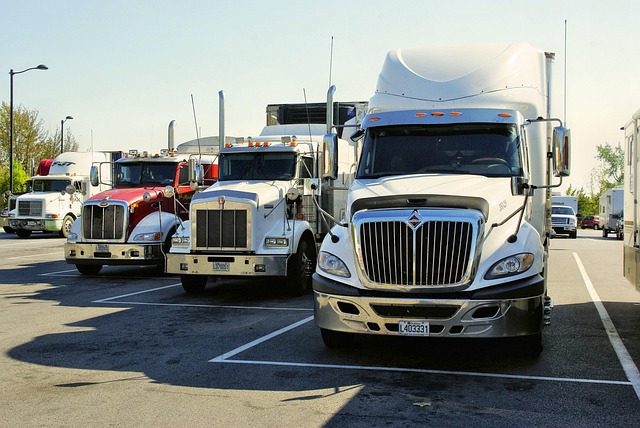Looking to register your car in California? This comprehensive guide breaks down the process step-by-step. From understanding essential requirements to navigating crucial VIN verification, you’ll learn everything needed to ensure a smooth registration experience. Gather necessary documents, perform a VIN check, select the right registration type, and pay fees efficiently. By following these simple steps, you’ll be on your way to securing your vehicle’s registration in no time.
- Understand California Car Registration Requirements
- Gather Necessary Documents for VIN Verification
- Perform Vehicle Identification Number (VIN) Check
- Select an Appropriate Registration Type and Pay Fees
- Submit Application and Receive Your Registration Certificate
Understand California Car Registration Requirements

Before registering your car in California, it’s crucial to understand the state’s specific requirements. One vital step is ensuring your vehicle has passed a recent safety and emissions inspection. This typically involves a thorough vin verification process, where the unique Vehicle Identification Number (VIN) of your car is cross-referenced against state databases to check for any outstanding issues or recalls.
In California, you may also opt for a mobile vin inspection or mobile vin verification service to simplify the process. These services bring the inspection to you, saving time and effort. Regardless of how you conduct the vin verification, having your car inspected by an approved facility is essential before proceeding with registration.
Gather Necessary Documents for VIN Verification

Before registering your car in California, you’ll need to gather several key documents for VIN (Vehicle Identification Number) verification. This process is a crucial step in ensuring the authenticity and legality of your vehicle. Start by collecting your vehicle’s registration certificate from its previous owner if it was purchased used. Also, obtain the title document, which will be required for transfer into your name with the California Department of Motor Vehicles (DMV).
Additionally, you’ll need to provide proof of insurance, a valid driver’s license, and the necessary fees for registration. For a seamless mobile vin verification process, ensure that your vehicle’s VIN is legible and accurately recorded. Consider using a trusted mobile vin inspection service or a mobile vin verifier app to simplify this task.
Perform Vehicle Identification Number (VIN) Check

Before registering your car in California, it’s crucial to perform a Vehicle Identification Number (VIN) check. This step is essential for ensuring that the vehicle you’re planning to register is legitimate and has not been reported as stolen or had its identity tampered with. A mobile VIN verifier can facilitate this process by offering convenient and accurate vin verification services right at your location, whether it’s at home or work.
During a VIN inspection, a professional will use specialized tools to cross-reference the VIN against national databases, ensuring that it matches the vehicle’s make, model, year, and other critical specifications. This prevents the registration of a car with a falsified history, which is a common practice in some less reputable transactions. A mobile vin verification service can provide this crucial service, making the registration process smoother and safer for California drivers.
Select an Appropriate Registration Type and Pay Fees

When registering your car in California, selecting the right registration type is essential. Different types cater to various vehicle categories and ownership scenarios. For instance, private individuals will have different requirements than businesses or those importing vehicles. The state offers options like regular registration, fleet registration, or specialized tags for vintage cars, each with its own fee structure. It’s crucial to choose the appropriate category to avoid unnecessary costs.
Fees vary based on the type of registration and vehicle age. You can expect to pay a base fee plus additional charges for emissions testing, title transfer, and other services. For convenience, consider using a mobile vin verifier or undergoing a mobile vin inspection to streamline the process. This not only saves time but also ensures your Vehicle Identification Number (VIN) is verified accurately before registration, making it easier to navigate California’s registration requirements.
Submit Application and Receive Your Registration Certificate

After completing your vehicle’s inspection, the next step is to submit your application and receive your registration certificate. This involves gathering all necessary documents, including proof of insurance, a valid driver’s license, and the vehicle’s title. You’ll also need to perform a VIN verification, which can be done through a mobile vin verifier or during a vin inspection at a designated location.
Once all these requirements are met, submit your application online or in-person at a California Department of Motor Vehicles (DMV) office. A processing fee will apply, and you’ll be issued a registration certificate that verifies your vehicle’s ownership and compliance with state regulations. This document is crucial for legal driving and should be kept up to date at all times.
Registering a car in California involves understanding specific requirements, gathering essential documents for VIN verification, completing a vehicle identification number (VIN) check, selecting the appropriate registration type, and paying associated fees. By meticulously navigating these steps, you’ll ensure your vehicle is legally registered, allowing you to hit the road with confidence. Remember, proper documentation and accurate information are key during the process, making it crucial to stay organized for a seamless car registration experience in California.
